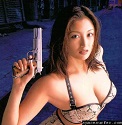I mainly reload for mass amounts of ammo (Dillon XL650) and occasionally for hunting (RBCS Rockchucker). I have a good understanding of for load development and doing precision measurements. What I am not sure about is what gives the best value to insure consistency and precision while handloading. Below are some items I am looking at but haven't gotten yet. I will give a fake dollar value based on their real cost and give you a budget of $26 (sorta like fantasy football but with reloading). I'm willing to pay more for automated/higher production options vs. lower cost/slower options. Unfortunately, I have more money than time.
Automated annealer (ie AMP annealer) $14
Single stage press (ie Co-AX) $5
Motorized Trimer (ie Giraud or like) $5
Match Die set (Redding etc) $2
Top quality powder measure/scale (ie RCBS Chargemaster Match) $9
Something else: $5
So what would be your lineup?




 Reply With Quote
Reply With Quote
